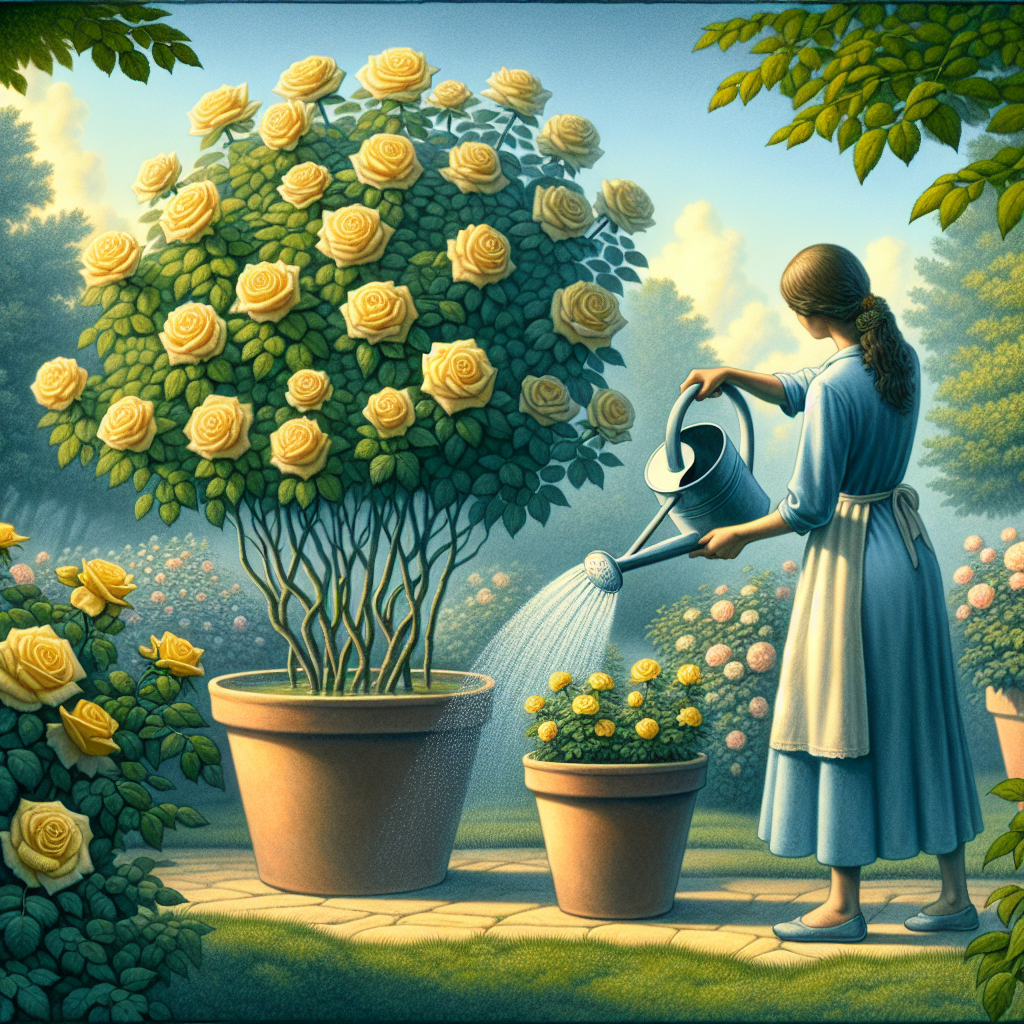
How to water roses in pots
How to Water Roses in Pots: A Comprehensive Guide
Roses are a timeless symbol of beauty, romance, and elegance. For many gardening enthusiasts, cultivating these magnificent flowers in pots brings joy and an opportunity to enjoy their splendid beauty in smaller spaces. However, proper care and maintenance are essential for their growth, particularly when it comes to watering. This guide will cover the best practices on how to water roses in pots, ensuring your roses thrive and bloom spectacularly.
Understanding the Watering Needs of Potted Roses
Before delving into the specifics of watering techniques, it is crucial to understand the general watering needs of potted roses. Unlike roses planted directly into the ground, potted roses have limited soil volume and drainage capabilities, making their watering requirements slightly different.
- Soil Type: The type of potting soil you use affects water retention and drainage. A well-draining soil mix is critical for pot-grown roses.
- Climate and Temperature: Hotter temperatures will necessitate increased watering. Conversely, cooler months may require less frequent watering.
- Plant Size: Larger plants with more foliage will consume more water than smaller plants.
Identifying When to Water Your Potted Roses
Knowing when to water is just as important as knowing how. Overwatering and underwatering can both lead to detrimental effects on your roses.
Signs Your Roses Need Water
- Soil is dry to the touch about an inch below the surface.
- Leaves appear wilted or droop.
- Flowers begin to droop or brown.
Signs of Overwatering
- Soil remains soggy and does not dry out.
- Leaves turn yellow and drop off.
- Roots may begin to rot, leading to a foul smell.
How to Water Roses in Pots Effectively
To achieve optimal growth and bloom, following the best practices for watering your potted roses is essential. Here's a step-by-step guide on how to water roses in pots.
Step 1: Choose the Right Time to Water
Timing is crucial when it comes to watering roses. It’s ideal to water early in the morning or late in the afternoon. This minimizes evaporation and allows the roots to absorb water effectively.
Step 2: Inspect the Soil
Before watering, check the soil moisture level. You can do this by sticking your finger into the soil or using a moisture meter for more precision.
Step 3: Water Generously
When you determine it’s time to water, do so generously. Apply water until it runs out of the drainage holes in the bottom of the pot. This ensures that the roots receive adequate moisture.
Step 4: Avoid Watering Leaves
Watering the leaves can lead to fungal diseases. Instead, aim to water the soil directly, ensuring that the roots receive the moisture they crave.
Water Quality and Temperature
The quality of water used can significantly impact the health of your roses. Here are important considerations:
- Water Temperature: Use water that is at room temperature to avoid shocking the root system.
- Water Quality: Rainwater is often preferable because it is free of chemicals. If using tap water, let it sit out for 24 hours to allow chemicals like chlorine to dissipate.
Maintaining Humidity and Mulching
Roses thrive in humid environments, so maintaining humidity can improve their health and vigor, especially in arid conditions.
Adding Humidity
You can increase humidity around your pot by:
- Grouping potted roses together
- Using a humidity tray filled with water and pebbles
- Spraying water mist around the plants, avoiding the blooms and leaves
Applying Mulch
Adding a layer of organic mulch on top of the soil can help retain moisture in the pot. Mulch also regulates temperature and suppresses weeds, benefiting the plants overall.
Winter Watering for Potted Roses
During winter months, potted roses require special care. Here’s how to assure proper hydration in colder weather:
- Water less frequently as temperatures drop.
- Monitor for signs of dehydration, especially during dry spells.
- Ensure the pots have adequate drainage to prevent root rot from frozen, soggy soil.
Common Pitfalls to Avoid
Understanding the common mistakes people make when caring for potted roses can help you steer clear of challenges:
- Overwatering: Frequently a result of poor soil drainage or watering on a set schedule without checking soil moisture.
- Ignoring Drainage: Proper drainage holes in the pot are essential for preventing excess water buildup.
- Not Adjusting for Seasons: Failing to modify watering practices based on changing temperatures can lead to stressed plants.
Conclusion
Knowing how to water roses in pots is critical for encouraging optimum health and blooms. By following the proper watering techniques and being aware of your roses’ specific needs, you can create a beautiful and flourishing rose garden, even in limited spaces. Keep an eye on soil moisture, be conscious of your environment, and your roses will reward you with their stunning, fragrant blooms for years to come.
“Roses are the most beautiful and fragrant flowers, and with the right care, they can flourish for many seasons.”```
By Guest, Published on October 14th, 2024